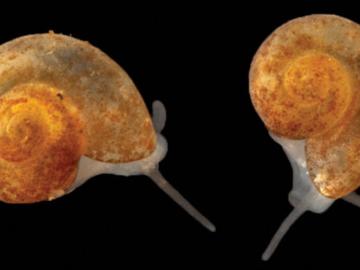
Filter News
Area of Research
- (-) Energy Science (43)
- (-) Materials (23)
- (-) Supercomputing (58)
- Advanced Manufacturing (1)
- Biology and Environment (29)
- Computational Biology (2)
- Computational Engineering (2)
- Computer Science (7)
- Electricity and Smart Grid (2)
- Fusion and Fission (5)
- Fusion Energy (7)
- Materials for Computing (6)
- Mathematics (1)
- National Security (15)
- Neutron Science (10)
- Nuclear Science and Technology (8)
- Nuclear Systems Modeling, Simulation and Validation (1)
- Quantum information Science (2)
- Sensors and Controls (1)
News Type
News Topics
- (-) Advanced Reactors (5)
- (-) Artificial Intelligence (25)
- (-) Big Data (21)
- (-) Clean Water (9)
- (-) Grid (28)
- (-) Nanotechnology (18)
- (-) Summit (29)
- 3-D Printing/Advanced Manufacturing (51)
- Bioenergy (15)
- Biology (12)
- Biomedical (16)
- Biotechnology (3)
- Buildings (25)
- Chemical Sciences (12)
- Composites (12)
- Computer Science (73)
- Coronavirus (17)
- Critical Materials (10)
- Cybersecurity (7)
- Energy Storage (45)
- Environment (52)
- Exascale Computing (17)
- Fossil Energy (1)
- Frontier (18)
- Fusion (5)
- High-Performance Computing (28)
- Hydropower (3)
- Isotopes (9)
- Machine Learning (11)
- Materials (48)
- Materials Science (46)
- Mathematics (4)
- Mercury (2)
- Microelectronics (1)
- Microscopy (15)
- Molten Salt (1)
- National Security (4)
- Neutron Science (20)
- Nuclear Energy (18)
- Partnerships (5)
- Physics (15)
- Polymers (12)
- Quantum Computing (16)
- Quantum Science (16)
- Security (5)
- Simulation (14)
- Software (1)
- Space Exploration (7)
- Statistics (1)
- Transportation (49)
Media Contacts

Researchers at Oak Ridge National Laboratory demonstrated a 20-kilowatt bi-directional wireless charging system on a UPS plug-in hybrid electric delivery truck, advancing the technology to a larger class of vehicles and enabling a new energy storage method for fleet owners and their facilities.

In the early 2000s, high-performance computing experts repurposed GPUs — common video game console components used to speed up image rendering and other time-consuming tasks

Researchers at the Department of Energy’s Oak Ridge National Laboratory (ORNL) in late February demonstrated a 20-kilowatt bi-directional wireless charging system installed on a UPS medium-duty, plug-in hybrid electric delivery truck.

In the race to identify solutions to the COVID-19 pandemic, researchers at the Department of Energy’s Oak Ridge National Laboratory are joining the fight by applying expertise in computational science, advanced manufacturing, data science and neutron science.

Sometimes conducting big science means discovering a species not much larger than a grain of sand.

We have a data problem. Humanity is now generating more data than it can handle; more sensors, smartphones, and devices of all types are coming online every day and contributing to the ever-growing global dataset.

Each year, approximately 6 billion gallons of fuel are wasted as vehicles wait at stop lights or sit in dense traffic with engines idling, according to US Department of Energy estimates.

As the second-leading cause of death in the United States, cancer is a public health crisis that afflicts nearly one in two people during their lifetime.

Researchers at ORNL demonstrated that sodium-ion batteries can serve as a low-cost, high performance substitute for rechargeable lithium-ion batteries commonly used in robotics, power tools, and grid-scale energy storage.

A novel approach developed by scientists at ORNL can scan massive datasets of large-scale satellite images to more accurately map infrastructure – such as buildings and roads – in hours versus days.


